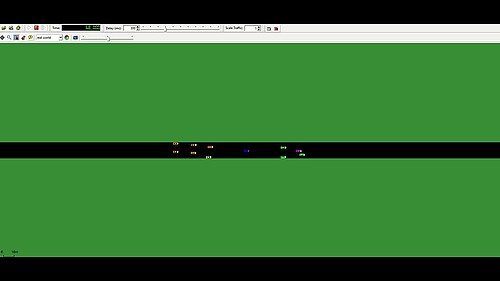Video Playlist 21: Distributed model predictive control of automated vehicles, platoons and flocks in lane-free traffic
These videos are part of the results presented in the journal paper titled "Distributed model predictive control of automated vehicle entities in lane-free traffic involving human driven vehicles" and conference paper titled "Distributed model predictive control of automated vehicles, platoons and flocks in lane-free traffic". We present two scenarios for each paper with vehicle data (dimensions, desired speeds, etc.) provided in the papers. Movement trajectories for all the scenarios were obtained by solving single-vehicle or joint optimal control problems, as detailed in the papers.
For the first paper, the first scenario addresses 6 entities of connected and automated vehicles (CAVs) which range from individual vehicles to 1-D and 2-D vehicle groups, such as CAV platoons, truck platoons or flocks driving on a lane-free straight road of 15 width. At the start, vehicle entities are longitudinally located in the reverse order of their desired speeds.
The second scenario is more complex, involving 55 vehicle entities that drive and maneuver in higher densities in a width-narrowing highway in the presence of human-driven vehicles (HDVs). Specifically, in Scenario 2 the lane-free highway includes a 600 m long funnel where the road width reduces from 12 m (upstream) to 8 m (downstream). This creates a bottleneck, due to which vehicles may have to slow down due to higher densities and reduced downstream capacity. Based on their initial arrangement, the vehicles travel approximately 9 km before reaching the funnel location. During this period, they perform numerous overtaking maneuvers and reach their desired speeds. However, as they approach the funnel, some vehicles are required to decelerate due to road narrowing, which results in increased traffic density, i.e., smaller distances between entities. Additionally, one lane is occupied by HDVs; therefore, the CAV entities must also avoid collisions with them. Several interesting episodes from Scenario 2 simulation have been recorded to demonstrate the efficiency of the proposed approach. At the end of every scenario, the entities have safely overtaken all the obstacles, converged to their formations and reached their desired speeds.
Scenario 1
In this video, 6 vehicle entities, including a triangle-shaped flock of 5 vehicles (green), a platoon of 3 vehicles (magenta), a truck platoon (yellow) and three single-vehicle entities (blue) are considered. The camera is tracking the leader of the vehicle flock on the road. At first, the pink platoon smoothly overtakes the flock, exhibiting snake-like movement behavior, while the flock vehicles open up to make way and facilitate the platoon passage. Then, the blue single-vehicle entities overtake the flock as they have higher desired speeds. Note that the 3 single vehicles find different ways to overtake the flock, e.g. through or on the sides of it. Meanwhile, the flock approaches a slower truck platoon and tightens its formation to overtake the slower trucks from the right. To enable safe advancement, platoon and flock entities may temporarily deform to allow overtakes and reform eventually.
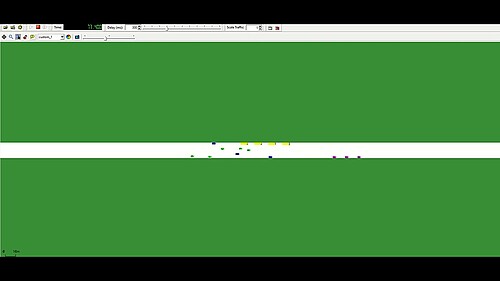
Scenario 2 (the funnel episode)
In this video, the camera is stationary and captures the movement of vehicles in the funnel area. Two vertical red lines mark the beginning and end of the funnel. It is demonstrated that vehicles successfully pass the funnel while respecting the road boundaries without any collisions. Several episodes of intelligent maneuvering emerge.
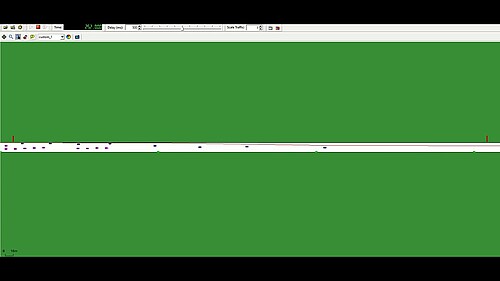
Scenario 2 (Episode (a))
In this video, the camera is following the entity #54 which is a truck platoon shown by yellow. At one point, the platoon opens up to allow two faster single entities, shown in blue, to pass. As trucks are slower compared to the other entities, they are intelligently and smoothly nudged toward the boundary, creating space for faster vehicles to overtake. After the road clears, the truck platoon returns to the center of the road to avoid collisions with HDVs.
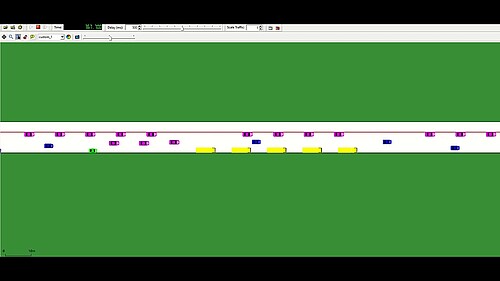
Scenario 2 (Episode (b))
In this video, the camera tracks the entity #52, a pink platoon consisting of 4 vehicles. Two pink platoons (entities #51 and #52) are trying to overtake a human-driven vehicle simultaneously. Entity #52 is seen patiently waiting for the right moment to overtake safely and smoothly, while the other platoon opens up to gradually overtake without risking collisions with nearby entities. After entity #52 completes the overtaking, entity #51 follows, and they both converge to their original formations.
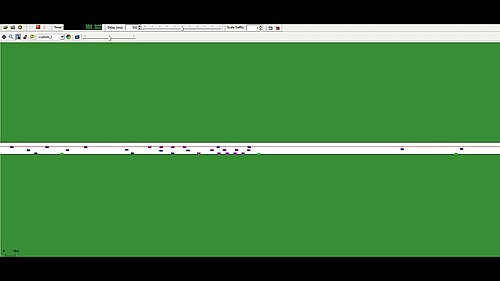
Scenario 2 (Episode (c))
In this video, the camera follows entity #54, a truck platoon before it enters the funnel area. It can be observed that the truck-platoon opens up its formation to let faster vehicles pass through it, and later the platoon reforms.
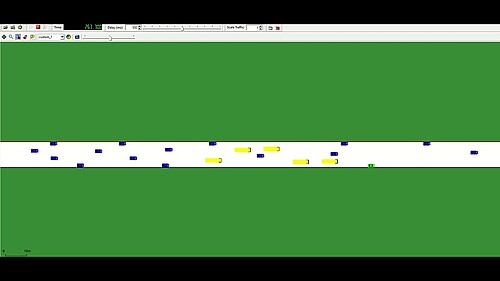
Scenario 2 (Episode (d))
In this video, the camera tracks the entity #4, a pink platoon, downstream of the funnel where the road has become narrower. Entity #4 faces another, slower pink platoon (entity #19), and it breaks through entity #19 and overtakes it. This smooth and intelligent behavior demonstrates the flexibility of the platoon design.
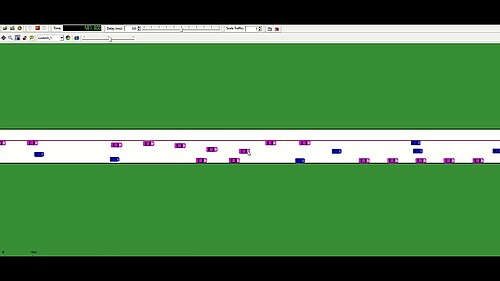
For the second paper, two cases, each addressing 5 entities of connected and automated vehicles (CAVs) which range from individual vehicles to 1-D and 2-D vehicle groups, such as platoons or flocks are tested on a lane-free straight road with 15 m width.
Scenario 1
In this video, 5 vehicle entities, including a triangle-shaped flock of 5 vehicles (shown with the color orange), a platoon of 3 vehicles (shown with the color green), and three single-vehicle entities (shown with colors yellow, magenta and blue) are considered. At the start, vehicle entities are longitudinally located in the reverse order of their desired speeds. The flock and platoon move at longitudinal speeds of 17m/s and 19m/s, respectively, while the individual vehicles move at 19m/s and 20m/s. At first, the platoon smoothly overtakes the flock exhibiting a snake-like movement behavior, while the flock vehicles open up to make way and facilitate the platoon passage. Then, the single-vehicle entities, shown by blue, magenta and yellow, overtake the platoon and flock as they have higher desired speeds. Note that the 3 single vehicles find different ways to overtake the flock, e.g. through or on the side of it. As safety is of highest importance, platoon and flock entities temporarily may deform to allow overtakes and reform eventually.
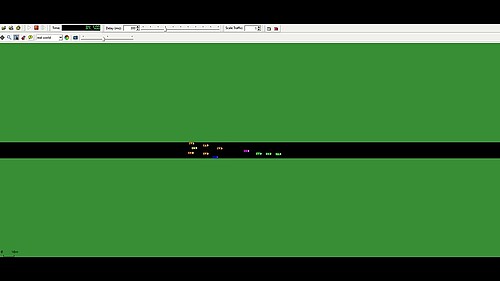
Scenario 2
In this video, 5 vehicle entities, including a triangle-shaped flock of 5 vehicles (shown with the color orange), another flock of 3 vehicles (shown with the color green), and three single-vehicle entities (shown with yellow, magenta and blue) are considered. At the beginning, the smaller green flock overtakes the larger orange one. This happens as the orange flock opens up to make way for the green flock, while the green flock tightens to pass through the orange one. Then the single-vehicle entities overtake the flocks using different paths. To actively facilitate this, flocks need to deform to provide lateral space for faster groups to overtake. This is again a cooperative behavior emerging from all-around vehicle nudging.
